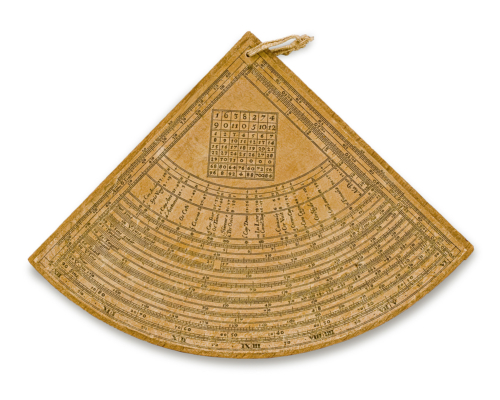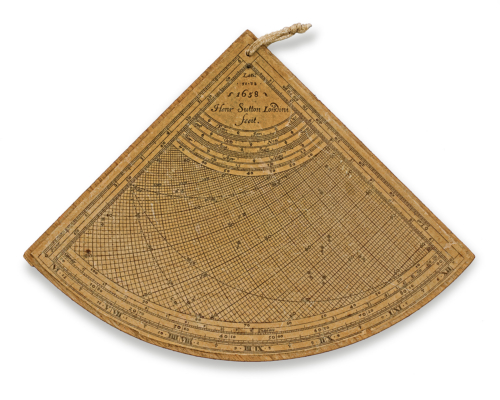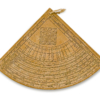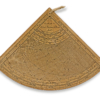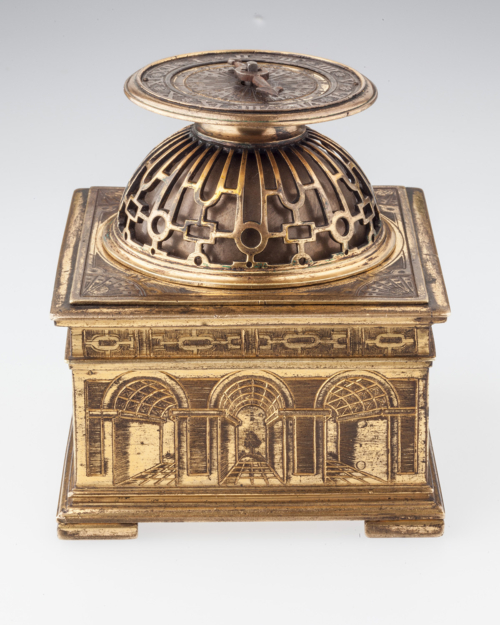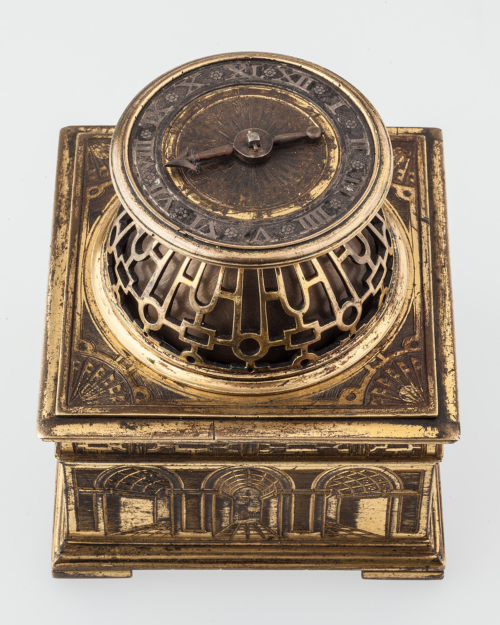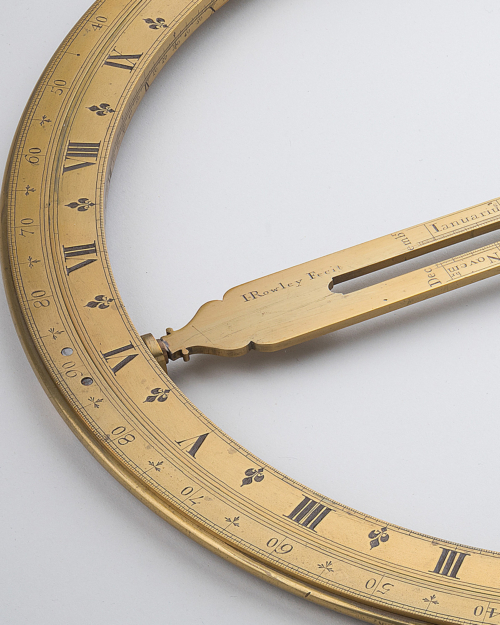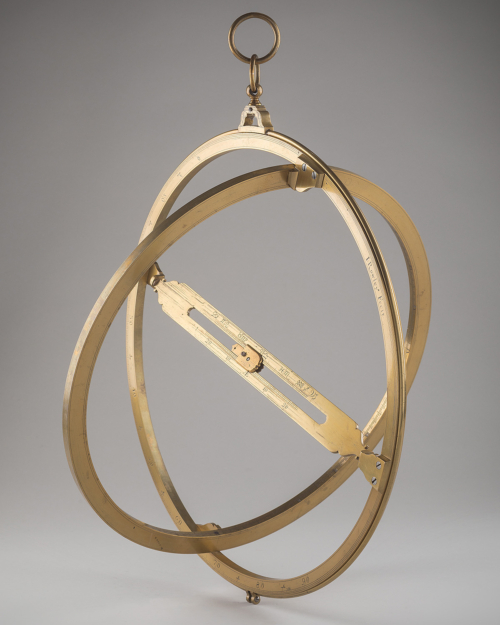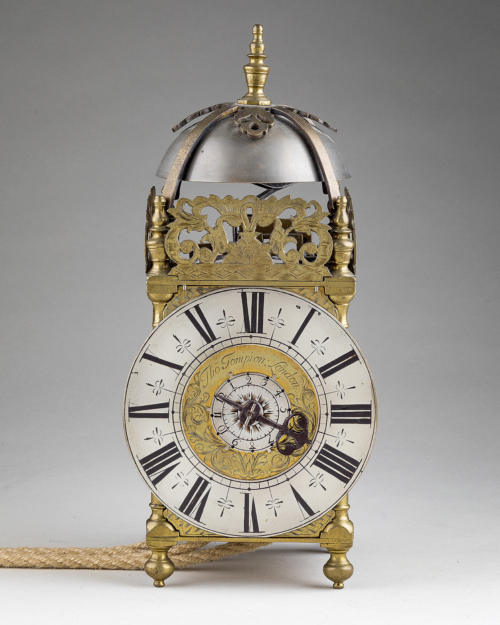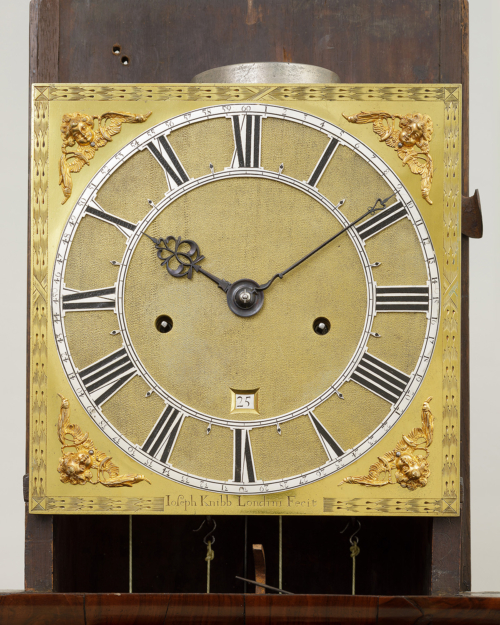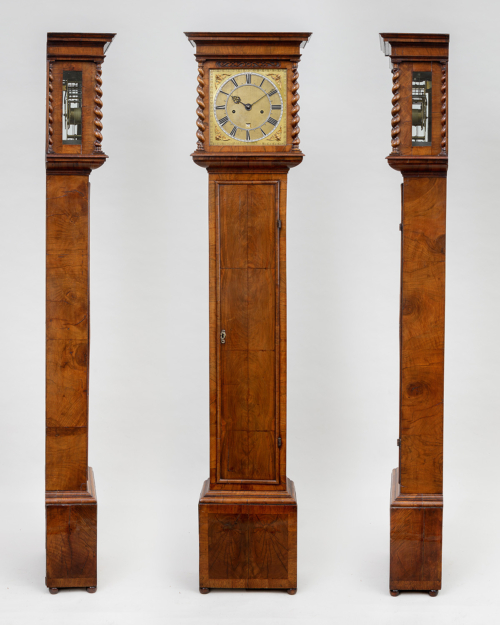| Height | Radius 5¾ inches (146 mm) |
| Dial | The obverse of the instrument is printed in the apex of the quadrant, Latit .51.32. (Latitude 51° 32’ North, for London), dated 1658 and signed Henr Sutton Londini fecit. The calendar scale below bearing each month, subdivided by a small ‘o’. With 21 marked stars printed on a grid marked with lower case alphabetical letters. A scale of hours divided 1-6 marked on one edge of the quadrant, while the other edge is marked with a latitude scale divided 1-90. Along the circumference of the quadrant is a double hour scale divided VI-XII and XII-VI, followed by a degree scale divided 0-90° marked Quadr, followed by a scale marked Shadow with scale above divided 1-50, being the equivalent of a shadow square on an astrolabe. |
| Provenance | Time Museum, Rockford, Illinois, USA, inventory no.1445: |
| Comparative Literature | Time Museum, Rockford, Illinois, USA, inventory no.1445; |
| Literature | A J Turner, The Time Museum, Volume 1, Astrolabes, Rockford, 1985, no.33, p.226-228; |
Exhibit № 3. Henry Sutton, London, Dated 1658
A very rare English Cromwellian Protectorate wooden horary quadrant with applied printed papers.
The horary quadrant was used to find the time of day; this quadrant also has an almanac and scales for measuring degrees of altitude and making trigonometric calculations.
Sold
Henry Sutton (fl.1624-1665) was a member of the Joiners’ Company, who worked in Threadneedle St. and was perhaps the most talented and original mathematical instrument maker in London. His instruments were renowned for their accuracy, but he also engraved and published copper-plate printed papers that were mounted as instruments, such as this rare oak horary quadrant.
Sutton was particularly noted for the dividing and engraving of numbered scales, and his surviving work in partnership with the clockmaker, Samuel Knibb, is a pivotal exemplar in the story of collaboration between clock and instrument makers. On his arrival in London by 1662, Samuel Knibb was first recorded as a clockmaker in Westminster, but he soon moved to Threadneedle St. certainly close by, and generally cited as sharing, Sutton’s premises. Sutton by then was at the zenith of his career, and their partnership allows not only the possibility that Sutton executed the necessary dividing and engraving of rings for Knibb, but also that Sutton’s workshop may have already been acting as engravers to the Fromanteel workshops, this on the strength of Knibb’s evidential work for, and with, Ahasuerus Fromanteel.
Henry Sutton had close connections with the early Fellows of the Royal Society and when he died in the plague of 1665, Robert Moray wrote to Henry Oldenburg, ‘wee all here are much troubled with the loss of poor Thomson & Sutton’. The prestige of Sutton’s scale division was such that even a century after his death his name was still used as a guarantee of quality.
This quadrant by the foremost instrument maker of the day, with its applied printed paper scales pulled from engraved copper plates, maintained Sutton’s famed accuracy but at dramatically reduced costs that, presumably, enabled greater sales to a wider market. As a single engraved copper plate could be used in batch production, the resulting stockpile of printed sheets might then be applied over succeeding years, and thus the 1658 date only indicates the start date of the batch manufacture. Examples of varying versions of Sutton’s printed horary quadrants mounted on wood can be found in the Science Museum, the British Museum, the Royal Museums Greenwich, the Museum of the History of Science in Oxford and the Whipple Museum, Cambridge.
Product Description
Henry Sutton (fl.1624-1665) was a member of the Joiners’ Company, who worked in Threadneedle St. and was perhaps the most talented and original mathematical instrument maker in London. His instruments were renowned for their accuracy, but he also engraved and published copper-plate printed papers that were mounted as instruments, such as this rare oak horary quadrant.
Sutton was particularly noted for the dividing and engraving of numbered scales, and his surviving work in partnership with the clockmaker, Samuel Knibb, is a pivotal exemplar in the story of collaboration between clock and instrument makers. On his arrival in London by 1662, Samuel Knibb was first recorded as a clockmaker in Westminster, but he soon moved to Threadneedle St. certainly close by, and generally cited as sharing, Sutton’s premises. Sutton by then was at the zenith of his career, and their partnership allows not only the possibility that Sutton executed the necessary dividing and engraving of rings for Knibb, but also that Sutton’s workshop may have already been acting as engravers to the Fromanteel workshops, this on the strength of Knibb’s evidential work for, and with, Ahasuerus Fromanteel.
Henry Sutton had close connections with the early Fellows of the Royal Society and when he died in the plague of 1665, Robert Moray wrote to Henry Oldenburg, ‘wee all here are much troubled with the loss of poor Thomson & Sutton’. The prestige of Sutton’s scale division was such that even a century after his death his name was still used as a guarantee of quality.
This quadrant by the foremost instrument maker of the day, with its applied printed paper scales pulled from engraved copper plates, maintained Sutton’s famed accuracy but at dramatically reduced costs that, presumably, enabled greater sales to a wider market. As a single engraved copper plate could be used in batch production, the resulting stockpile of printed sheets might then be applied over succeeding years, and thus the 1658 date only indicates the start date of the batch manufacture. Examples of varying versions of Sutton’s printed horary quadrants mounted on wood can be found in the Science Museum, the British Museum, the Royal Museums Greenwich, the Museum of the History of Science in Oxford and the Whipple Museum, Cambridge.
Additional information
| Dimensions | 5827373 cm |
|---|

